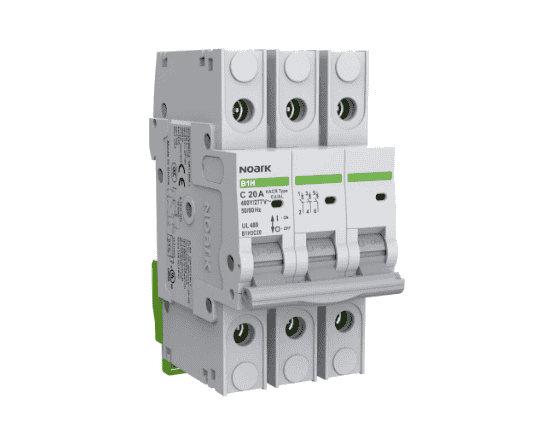Webinars are a powerful marketing tool for B2B companies looking to reach new audiences, educate potential customers, and build relationships. With so much competition in the B2B market, it’s essential to measure the impact and effectiveness of your webinar marketing efforts. That’s why it’s crucial to understand the key metrics to track when conducting webinars. In this blog, we’ll highlight 10 essential B2B marketing metrics to measure the success of your webinars.
Importance of Measuring Webinar Metrics
Measuring the success of your webinars is critical for several reasons:
- Tracking webinar metrics helps you understand your audience’s behavior. This insight can inform future webinar content, presentation style, and promotion efforts.
- Measuring webinar metrics helps you improve the performance of your webinars. You can use the data to identify areas for improvement and make changes that will drive better results.
- Tracking webinar metrics provide valuable information to justify investments in webinar marketing.
You can show stakeholders the impact of webinars on your business and make a case for continuing or expanding your webinar efforts. You can also hire a B2B marketing agency or a webinar marketing agency to track done and provide more valuable outcomes.
10 B2B Marketing Metrics to Measure Webinars
A. Registration rate
This metric measures the number of people who register for your webinar compared to the total number of people who received an invitation. A high registration rate indicates that your invitation was well received and that your target audience is interested in attending your webinar.
B. Attendance rate
This metric measures the number of people who attended your webinar compared to the total number of registered attendees. A high attendance rate indicates that your webinar was well-promoted and that your target audience was motivated to attend.
C. Engagement rate
This metric measures the level of interaction and engagement during your webinar. Engagement metrics can include the number of questions asked, the number of comments made, and the amount of time spent on certain slides. A high engagement rate indicates that your audience is engaged and interested in your content.
D. Retention rate
This metric measures the number of attendees who stayed for the entire webinar compared to the total number of attendees. A high retention rate indicates that your content was engaging and valuable.
E. Lead generation rate
This metric measures the number of leads generated from your webinar. Leads can include contact information, such as email addresses, or other data that can be used to market to attendees in the future. A high lead generation rate indicates that your webinar effectively generates new business opportunities.
F. Conversion rate
This metric measures the number of attendees who took a specific action after the webinar, such as filling out a form or purchasing. A high conversion rate indicates that your webinar effectively converts attendees into customers.
G. Post-webinar survey feedback
The feedback you receive from attendees after your webinar. Surveys can provide valuable insight into what attendees liked about the webinar, what could be improved, and what topics they would like to see covered in future webinars. This information can be used to make changes that will improve the performance of future webinars.
H. Post-webinar follow-up rate
The number of attendees responded to post-webinar follow-up efforts, such as emails or phone calls. A high follow-up rate indicates that your webinar was effective in engaging attendees and that they are interested in your business.
I. Webinar replay views
This metric measures the number of people who viewed the recorded version of your webinar after the live event. A high number of views indicates that your webinar was valuable and that attendees shared it with others.
J. Social media engagement
This metric measures the level of engagement on social media related to your webinar. A high level of engagement indicates that your webinar was well received and that attendees are spreading the word about your business. Engagement metrics can include the number of shares, likes, and comments on your webinar-related social media posts.
Conclusion
Webinars are an effective B2B marketing tool that can help you reach new audiences, educate potential customers, and build relationships. However, to ensure that your webinar efforts are successful, it’s essential to measure the impact of your webinars. By tracking the 10 B2B marketing metrics outlined in this blog, you’ll be able to make informed decisions about your webinar marketing strategy and improve the performance of your webinars.
FAQs
Q: What is the purpose of tracking webinar metrics?
A: The purpose of tracking webinar metrics is to understand the impact and effectiveness of your webinar marketing efforts. By tracking metrics such as registration rate, engagement rate, and conversion rate, you’ll be able to make informed decisions about your webinar marketing strategy and improve the performance of your webinars.
Q: Why are webinars important in B2B marketing?
A: Webinars are important in B2B marketing because they offer a powerful way to reach and engage with potential customers. Webinars allow B2B companies to educate potential customers, build relationships, and generate new business opportunities. By tracking the metrics outlined in this blog, B2B companies can ensure that their webinar efforts are successful.
Q: How can I improve my webinar registration rate?
A: To improve your webinar registration rate, you can take the following steps:
- Offer early bird registration discounts to encourage people to sign up early.
- Provide a compelling and clear description of the webinar’s content and benefits.
- Offer a lead magnet, such as a free guide or resource, to incentivize people to register for your webinar.
- Use social media and email marketing to promote your webinar and reach a wider audience.
- Collaborate with other businesses or influencers to promote your webinar and reach new audiences.
Q: How can I improve my webinar engagement rate?
A: To improve your webinar engagement rate, you can take the following steps:
- Choose a topic that is relevant and of interest to your target audience.
- Use interactive elements such as polls and Q&A sessions to keep attendees engaged.
- Use visuals, such as slides and videos, to help explain and illustrate your points.
- Encourage attendees to ask questions and participate in discussions.
- Provide valuable and actionable information that attendees can apply to their businesses.
Q: How can I improve my post-webinar follow-up rate?
A: To improve your post-webinar follow-up rate, you can take the following steps:
- Send a follow-up email to all attendees within 24 hours of the webinar.
- Offer attendees a special incentive, such as a discount or free resource, to encourage them to follow up with you.
- Personalize your follow-up emails and ensure they address each attendee’s specific interests and needs.
- Make sure your follow-up emails are clear, and concise and include a call-to-action.
- Use phone follow-up to reach attendees who have yet to respond to your emails.


